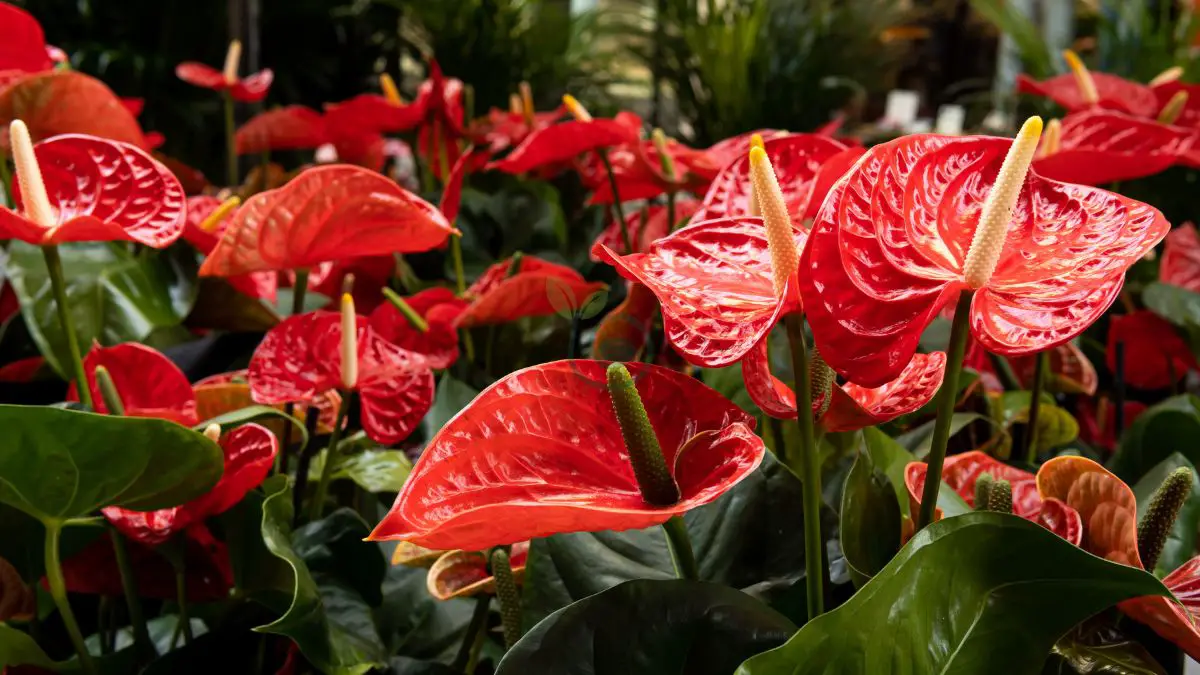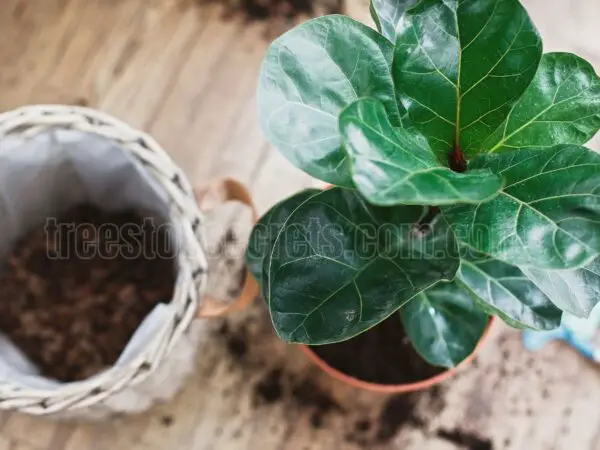Anthurium flowers, known for their vibrant colors and heart-shaped blooms, have captivated plant enthusiasts for centuries. Originating from the tropical regions of South America, these stunning flowers require specific care to thrive in different environments. In this comprehensive guide, we will delve into the essential tips and techniques to ensure your anthuriums flourish year-round. From proper watering schedules to ideal lighting conditions, we'll demystify the secrets behind cultivating healthy and beautiful anthurium plants, preventing underwatering and yellow leaf tips.
Whether you're a seasoned gardener or new to plant care, unlocking the potential of your anthurium flowers can be a rewarding experience. Join us as we explore the fascinating world of anthuriums, a flower, and learn how to elevate your indoor gardening skills with these exquisite blooms.
Anthurium Basics
Light Needs
Anthurium flowers thrive in bright indirect light for optimal blooming. Direct sunlight should be avoided to prevent leaf damage. Increasing light exposure can result in more abundant and vibrant blooms.
Soil Type
For healthy growth, use well-draining soil that prevents waterlogging. Opt for a soil mix rich in organic matter to provide essential nutrients. Ensure good aeration within the soil for robust root development.
Watering Schedule
Maintain Anthurium's health by watering when the soil is 50-75% dry to prevent overwatering. Allow excess water to drain completely to avoid water accumulation at the roots. Overwatering can lead to yellowing leaves, so it's crucial to monitor watering frequency.
Temperature and Humidity
To promote optimal growth, maintain temperatures between 65-80°F. Creating a humid environment is beneficial for Anthurium plants as they thrive in high humidity levels. Avoid exposing the plant to extreme temperature fluctuations as it can stress the plant and hinder its growth.
Encouraging Blooms
Fertilization Tips
To encourage vibrant blooms, feed your anthurium with a high-nitrogen fertilizer monthly. Dilute the fertilizer to half strength before applying it to the plant. Always remember to apply the fertilizer only when the soil is damp.
When fertilizing your anthurium, consider these tips:
- Feed monthly with high-nitrogen fertilizer.
- Dilute fertilizer to half strength before application.
- Apply only to damp soil.
Pruning Practices
Pruning is essential for maintaining healthy anthurium plants. Remove spent flowers promptly to stimulate new growth. Trim any yellow or brown leaves not just for aesthetics but also for the plant's health. Correctly pruning your anthurium will encourage new growth.
Key practices for pruning anthuriums include:
- Remove spent flowers promptly.
- Trim yellow or brown leaves for aesthetics.
- Encourage new growth by pruning correctly.
Deadheading Flowers
Deadheading is crucial for continuous blooming of anthuriums. By removing faded blooms, you redirect energy towards producing new flowers. Regular deadheading not only promotes continuous blooming but also enhances the overall appearance of the plant.
Consider these tips for deadheading anthurium flowers:
- Deadhead flowers to promote continuous blooming.
- Remove faded blooms to redirect energy.
- Enhance plant appearance by deadheading regularly.
Repotting Anthuriums
When to Repot
Repot Anthurium if roots outgrow the current pot, showing signs of being root-bound. Choose a slightly larger pot for repotting.
Choosing a Pot
- Select a pot with drainage holes to prevent waterlogging.
- Opt for a pot that allows ample room for root growth and expansion.
- Consider the aesthetic appeal of the pot to enhance your indoor plant display.
Soil Mix Tips
Use a well-draining soil mix to prevent water accumulation and root rot. Incorporate perlite or orchid bark for improved aeration within the soil. Ensure the soil mix retains some moisture to support healthy growth.
Seasonal Care
Overwintering Tips
During winter, provide a rest period for your Anthurium to thrive. Reduce watering frequency as the plant's growth slows down in colder months. Remember to protect Anthurium from cold drafts to prevent damage.
Adjusting Care by Season
In dry seasons, increase humidity levels around your Anthurium plant to mimic its natural habitat. Adjust watering frequency according to the season; more water is needed during warmer months. Be vigilant in monitoring light exposure changes throughout the year for optimal growth.
Common Issues
Yellow Leaves
Yellow leaves on anthurium plants indicate moisture level issues. To address this, check the soil moisture regularly to prevent overwatering. Adjust the watering schedule accordingly and ensure proper drainage to prevent root rot.
Floppy Leaves
When dealing with floppy leaves, provide support using stakes to maintain their upright position. Adjust light exposure if needed to prevent leggy growth, which can lead to floppy leaves. Inspect for pests that may be causing the leaf drooping.
Pest Problems
Regularly inspect anthurium leaves for any signs of pests. Promptly treat any pest infestations to prevent further damage to the plant. Consider using natural remedies like neem oil as a pest control measure.
Promoting Health and Blooms
Natural Bloom Encouragement
Anthurium flowers thrive in bright, indirect light, promoting vibrant blooms. Consistent care routines, including regular watering and proper fertilization, are key to encouraging healthy growth. Pruning is essential to stimulate new blooms and maintain plant health.
To ensure your anthurium blooms beautifully, place it in a spot with ample natural light without direct sun exposure. This will help the plant produce vibrant flowers regularly. Watering consistently and providing balanced fertilization will support the plant's blooming cycle. Regularly pruning faded blooms encourages the growth of new flowers.
Addressing Common Problems
Early detection and treatment of root rot are crucial for maintaining your anthurium's health. Overwatering can lead to root rot, so ensure proper drainage to prevent this issue. Keep an eye out for common pests like aphids and spider mites by inspecting the leaves regularly. Adjust your care practices based on how the plant responds to treatments.
- Pros:
- Healthy blooms
- Vibrant foliage
- Cons:
- Prone to root rot if overwatered
- Susceptible to pests if not monitored regularly
When addressing root rot, trim affected roots and repot the plant in fresh soil to prevent further spread. For pest control, consider using natural remedies like neem oil or insecticidal soap. By paying attention to your plant's reactions, you can adjust its care routine accordingly.
Advanced Care Techniques
Propagation Guide
Propagation of Anthurium can be done through division. Healthy plant sections should be used for propagation to ensure successful growth. New plants need adequate light and humidity levels to thrive.
Types of Anthuriums
Explore various Anthurium varieties to enjoy a range of unique colors in your collection. Consider the size and growth habits of each type before making a selection. Choose Anthurium types that align with your home care capabilities.
Final Remarks
You've learned the essential care tips for your anthurium plants, from basic care to advanced techniques. By understanding their needs and addressing potential issues promptly, you can ensure vibrant blooms and healthy foliage. Remember to provide adequate light, water consistently, and fertilize appropriately. Repot when necessary and keep an eye out for pests or diseases. With these strategies in place, you're well-equipped to nurture your anthuriums successfully.
Take the knowledge you've gained here and put it into practice. Your anthuriums will thrive with the care and attention you provide. Share your newfound expertise with fellow plant enthusiasts and continue to expand your plant care skills. Keep cultivating your green thumb and enjoy the beauty of your flourishing anthuriums!
Frequently Asked Questions
How often should I water my anthurium plant?
Water your anthurium plant when the top inch of soil feels dry. Typically, this means watering every 1-2 weeks. Ensure proper drainage to prevent root rot.
What is the ideal light condition for anthurium plants?
Anthurium plants thrive in bright, indirect light. Avoid direct sunlight as it can scorch the leaves. Place them near a window with sheer curtains for filtered light.
How can I encourage my anthurium plant to bloom?
To encourage blooms, provide a humid environment by misting the plant regularly. Use a balanced fertilizer during the growing season and ensure proper watering and lighting conditions.
When should I repot my anthurium plant?
Repot your anthurium plant every 2-3 years or when it outgrows its current pot. Choose a slightly larger container with good drainage and fresh, well-draining potting mix.
How do I address common issues like yellowing leaves or pests on my anthurium plant?
Yellowing leaves may indicate overwatering or underwatering. Adjust your watering schedule accordingly. For pests, gently wash the leaves with soapy water or use neem oil spray as a natural remedy.
Image Source: Paid image from CANVA




